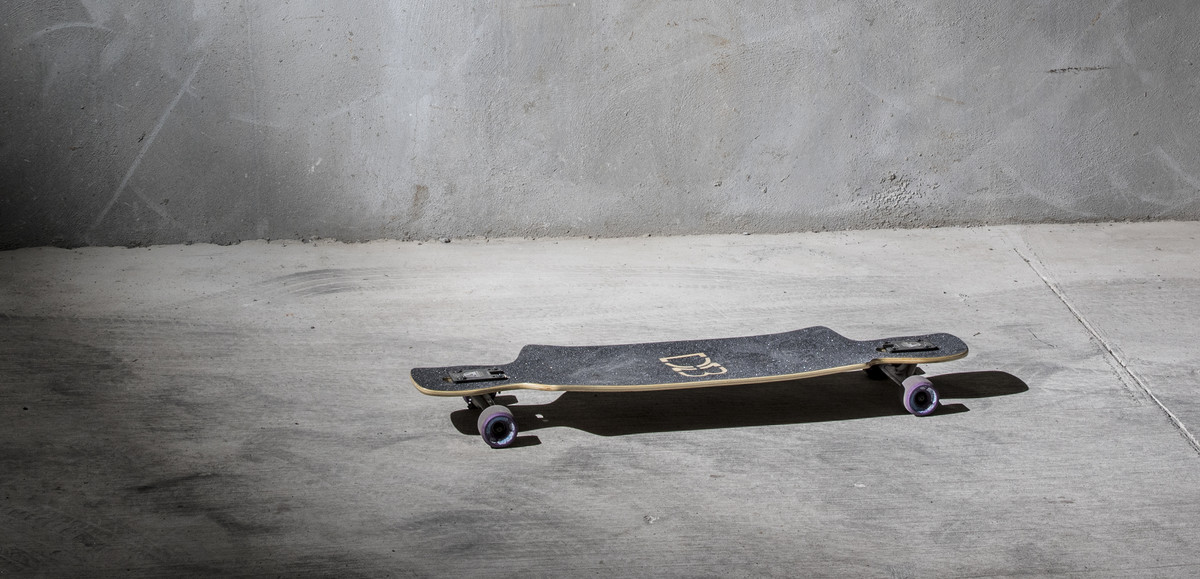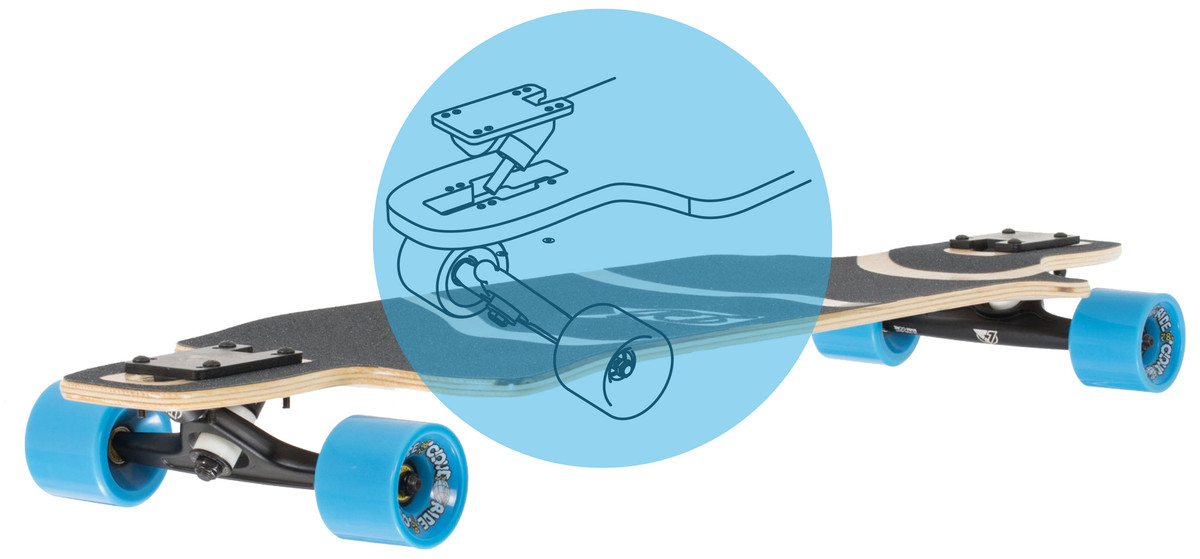Longboard Skateboard Buyers Guide


If you're new to longboarding you might be searching for a good “How to buy a longboard” article to assist you in your journey. You're in luck! We’ve created a simple yet in-depth set of articles to get you up to speed and onto a board that is right for you. To start things off we’re going to catch you up on some of the terminology we’ll be using so everything makes sense.
Cruiser or Carver, Downhill or Freeride?
If you are looking to carve down mellow hills, commute, or just get from point A to point B you most likely after a Cruiser or Carver. Here is an few examples of what you might be after.

If you are more performance oriented, want to go fast, or want to learn to slide or freeride you should be looking into a Freeride or Downhill board. Maybe something like this:
Drop-Through Mounting

On a drop-through board a special hole is cut at the truck mounting location which allows the truck to “drop through” the surface of the deck. This allows the board to be lower to the ground creating a lower deck height. This gives the rider a shorter distance to the ground, making pushing much easier. It also lowers your center of gravity and reduces the leverage you have on your trucks making these boards feel slightly more stable.
Top Mounting
Boards that are mounted traditionally (top mounted) offer the rider more leverage over the trucks and more grip on the road. Boards with this mounting orientation offer a carvy feel on cruisers, a more responsive feel on freeride and downhill boards.

Concaves Defined
Concave is the combination of curvatures that define the surface of the longboard deck. Most concaves can be described by three points of difference
- Tip to tail Curvature
- Rail to rail Curvature
- Drops
Camber, Rocker, Drops, Noses & Tails.
Camber is a useful tip to tail curvature where the board bends upwards elevating the rider higher off the ground. With a higher center over the trucks the rider has more leverage and can dive deeper into turns. Camber is very common on cruising and carving boards.

Rocker is the opposite of camber. Rockered boards bow downward creating an uphill surface for the rider to leverage against and reducing the height of the board off the ground. Rocker is a popular curvature for freeride and downhill boards.

Dropped curvatures create a lowered deck platform with extreme drops in the tip to tail curvature of the board. These drops often create pockets that are great for locking your feet in for turns or slides. Dropped platforms are lower to the ground, easier to push and more stable at speed.

Single Kick and Double Kick boards have either one or two kick tails. Kick tails are great for ollies, manuals, and lots of other fun stuff.
Concave Types
Concave is the curvature of your board form side to side. Concave is used to create a bowled surface that keeps your feet from sliding off your board. Concave also provides physical feedback for your feet and specialized leverage points.
Radial Concave is a constant arc from side to side. This creates a comfortable concave that locks you in and allows for easy readjustment.

W-Concave combines radial concave with a mid rise. The middle rise fills in the natural arch of your foot and provides a center point on your board.


